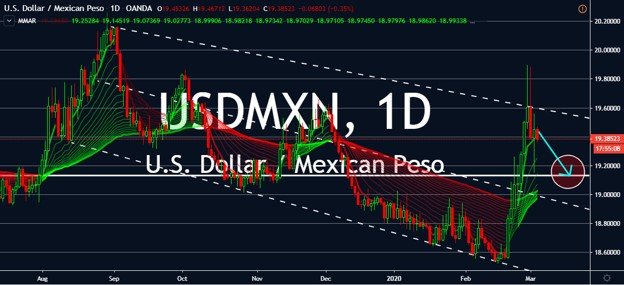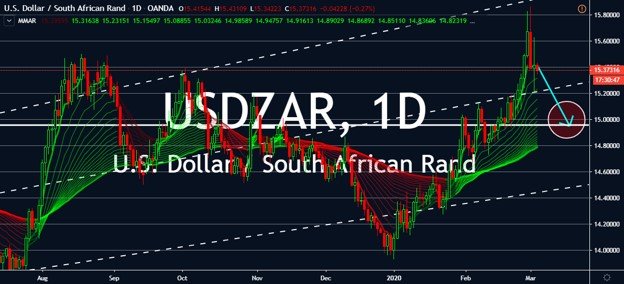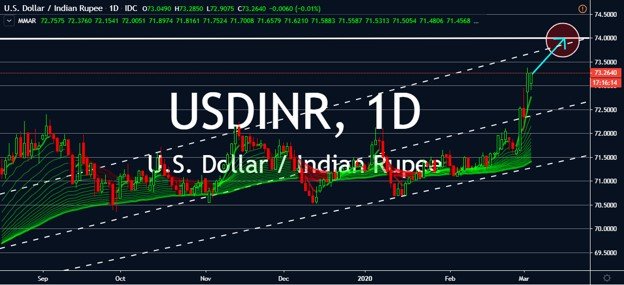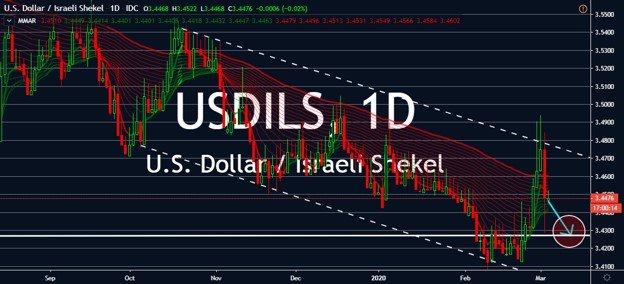Good day traders! Check now the most recent charts and market updates for today’s session. Learn more about analysis and be updated on the current happenings in the market!
USDMXN
After a shocking cut from the United States Federal Reserve Yesterday, Tuesday, the US dollar is in for a bearish run in sessions. Bulls lost all their momentum after the US central bank decided to ease their official interest by 0.5 basis points, setting a downward fate for the beloved buck. It’s now expected that the pair will descend lower to its support levels and reach it by the halfway point of the month. The rate cut of the US fed came in at a great time for the Mexican peso as it struggled to hold itself in sessions prior due to the disappointing results produced by the Mexican economy. Before the rate cut of the Fed, the Mexican peso has been in deep waters due to the spike in the country’s unemployment rate, which jumped even further from the projected figures, straining the strength of the Mexican dollar. Last week, it was reported that Mexico’s January unemployment rate n.s.a. hiked from 2.90% to a whopping 3.80%.

USDZAR
Bulls totally lost their grip on the upward momentum of the USDZAR pair, sealing the fate of the pair to touch its support levels in sessions. The pair is projected to be reeled in lower by bears as they take advantage of the rate cut delivered by the United States Federal Reserve yesterday. The freshly delivered rate cut overshadowed the disappointing results produced by the South African economy in trading sessions such as the drop in the country’s gross domestic product that was just reported yesterday. According to official data from South Africa, the fourth quarter GDP dropped from 0.1% to an alarming -0.5%, sliding even further from the projected -0.1%. Fortunately for the South African rand, the data was heavily outweighed by the more prominent events and results from the US dollar. On top of that, the rate cut came in just the nick of time for the ZAR as it struggled to prevent the USD from dominating the pair.

USDINR
It’s a rough day for the Indian rupee. Considering that the US Federal Reserve recently slashed their interest rates, it’s a big surprise that bears weren’t able to take advantage of the weakening US dollar. It only means one thing – the Indian rupee is much weaker than the US dollar. The reason? The rapidly spreading coronavirus and the heightening concerns of investors about the impact of the virus on the country’s economy and the global economy. The uncontrollable spread of COVID-19 to other countries around the globe has set a rather gloomy mood in the global market and in the Indian market. Just recently, the Reserve Bank of India assured its people that the bank will take proper measures to counter the impact of the coronavirus, which suggests that the bank will be ready to slash its rates even further to support the economy. The assurance wasn’t enough to support the Indian rupee in sessions even against the weak US dollar.

USDILS
It’s time for the Israeli shekel to recover some of its recent losses against the US dollar after a steep spike of the USDILS pair in the recent trading sessions. Bears are hoping to outrun the greenback in sessions after the shocking 0.5 basis rate cut from the United States Federal Reserve yesterday. Looking at the bigger picture, the recent results produced by the Israeli economy showed stagnant figures which failed to buoy the Israeli shekel against the US dollar prior, however, the rate cut is bound to be the turning point for the pair. As measures for the impact of the novel coronavirus to the US economy, the Fed decided to ease its interest rates as suggested by Jerome Powell prior to the announcement. The emergency rate cut from the Fed placed the greenback on the defensive against the shekel. The rate cut also comes at a rough time as bulls were looking to recover their major losses against the shekel which, unfortunately, won’t be the case anymore.










